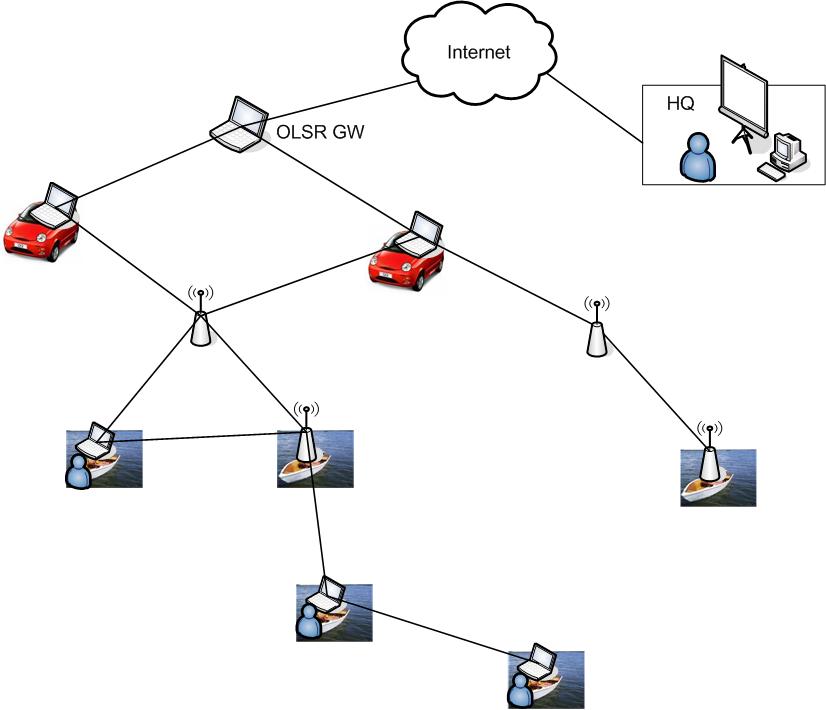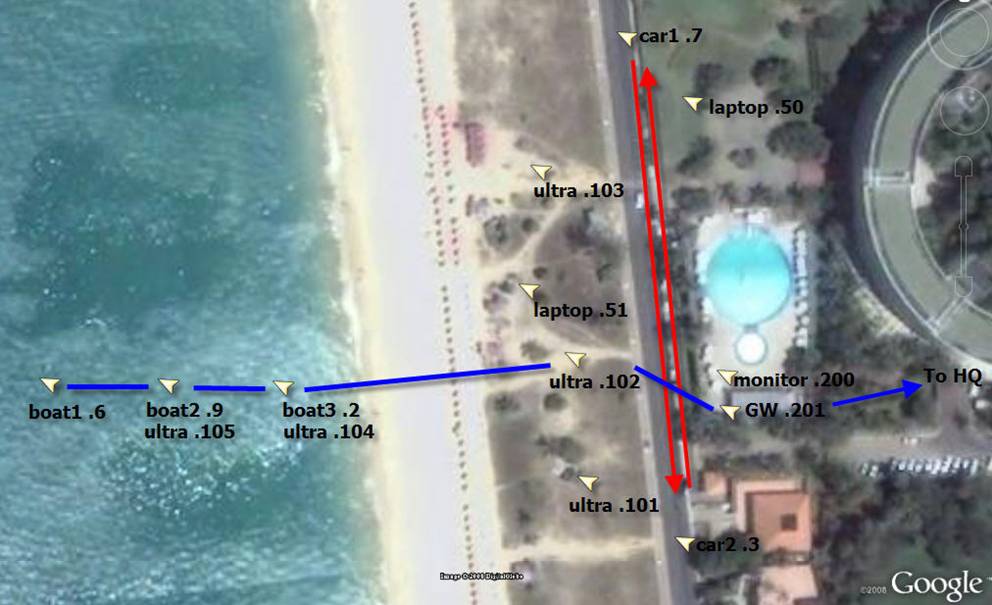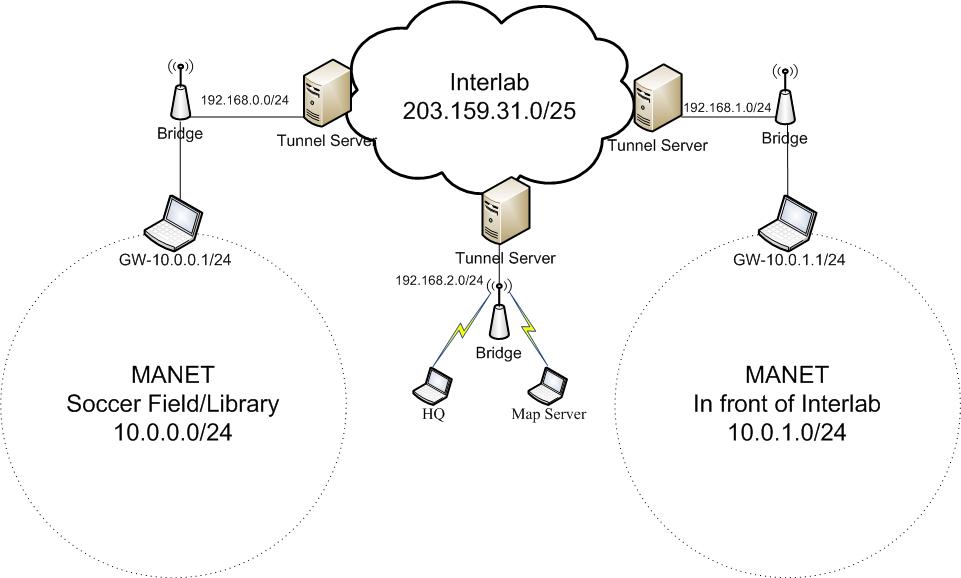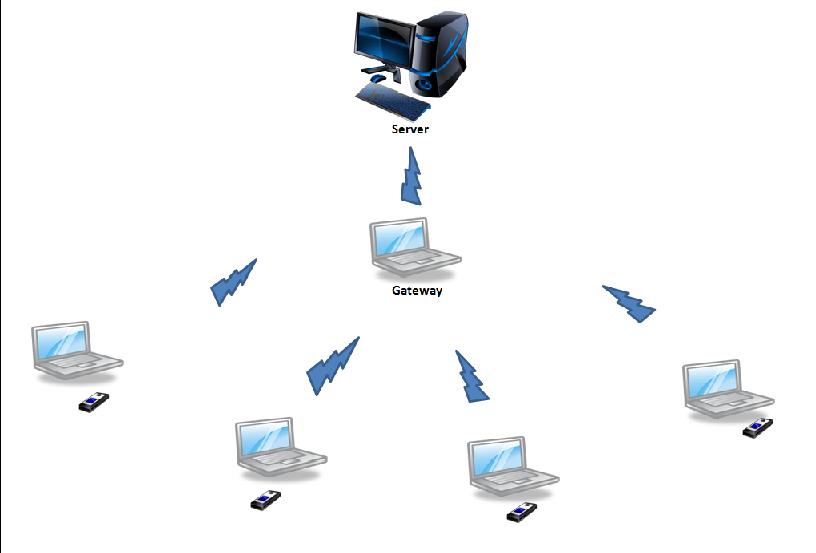Activities
Demonstration
We presented 2 demonstration in ITST 2008
Research on going
research on going
MANEMO is the combination of Mobile Ad hoc Network (MANET) and Network Mobility (NEMO) Basic Support protocol where NEMO provides session connectivity and Tree Discovery (TD) and Network In Node Advertisement (NINA) provide routing information.

In the above Figure the testbed scenario for MANEMO is shown. In each vehicle carries Microclient Jr. as Mobile Router which provides an egress interface (Ad hoc wifi) and an ingress interface (Access Point). Rescue worker board on the vehicle carrying a lightweight Laptop PC or EeePC attached to the Mobile Router’s Ingress interface runs multimedia application and communicate with the central command center.
OLSR is a single Mobile Ad hoc Network comprising with a variety of mobile nodes and almost similar network condition. A node can communicate with other neighbor node and with the distant command center situated anywhere in the internet. Headquarter has some special application to visualize the real-time position and movement of the individual nodes and can send broadcast message to all the nodes.

In the above Figure the testbed scenario of Mesh-OLSR network is shown. Each rescue worker carries a Wifi enable light-weight mobile device which may be a Laptop PC or EeePC with built-in webcam, microphone and speaker. These mobile devices run our developed multimedia applications to search and rescue the disaster affected victims. The purpose of using light-weight, small sized EeePC is to help the rescue worker to move easily in the disaster area. Ultraclient is used as OLSR router to extend the network coverage.

AIT’s Internet Education and Research Laboratory (intERLab), together with the State Ministry for Research and Technology of Indonesia (RISTEK Indonesia) and the National Electronics and Computer Technology Center (NECTEC), Thailand organized WirelessU: Wireless Internet-Emergency Workshops held on 12-16 October 2009 at the AIT Conference Center.
We have conducted an workshop on Emergency Network (DUMBO2) where the participants have gathered hands on experience which will help them to setup an Emergency Network in the future.
The topology that we used for the training is as follows:

We have created two MANETs with different subnet and the Central Command Center or HQ and the Map Server are situated anywhere in the Internet. The users from any MANET can contact with anyone from the same MANET or another MANET or with the HQ. The HQ can communicate with with multiple users from different MANETs.
Each client machine carries a GPS receiver with them which sends GPS location information using the DUMBO Network to the Map Server. Map Server show the realtime position and movement of the field worker. If the Map server does not get the updated information from a client it shows a sign of alarm and the HQ can take necessary action accordingly.
The sample topology and utput of the Map Server is shown below:


